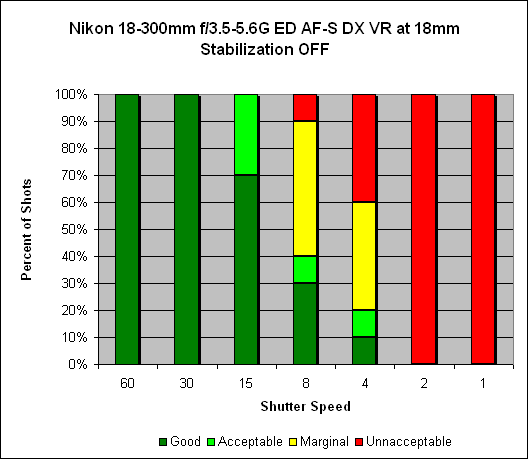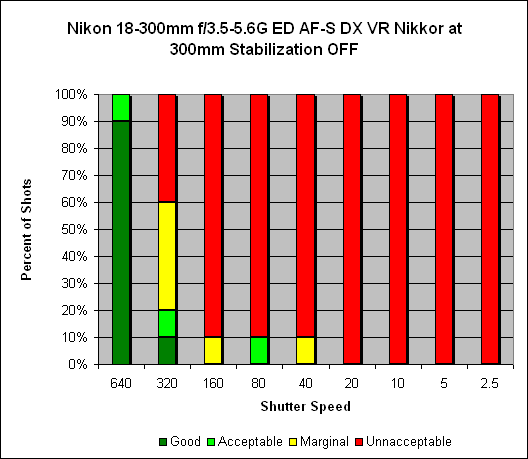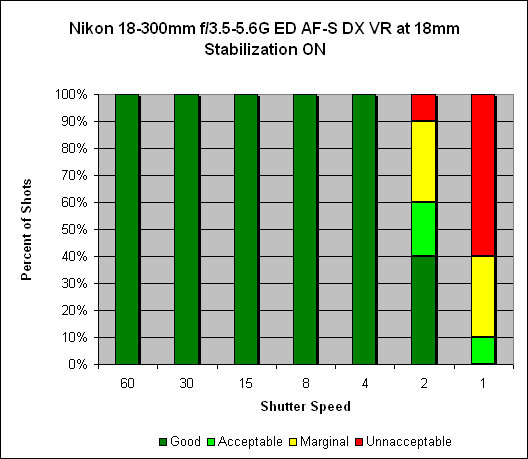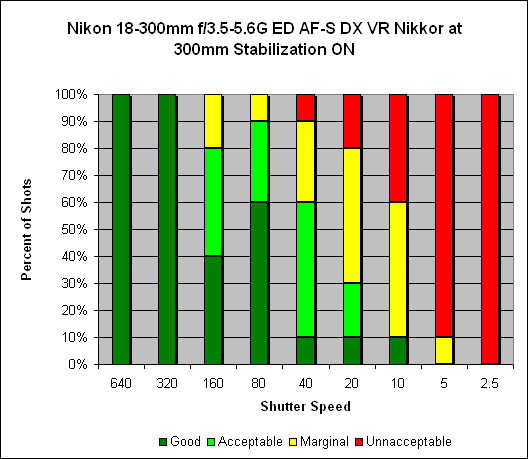Most people tend to think of image stabilization as being mainly for telephoto lenses. While it's true that their longer focal lengths tend to magnify the effects of camera shake, image stabilization can provde a very useful assist at wider angle focal lengths as well; anyone who's ever tried to blur the image of a waterfall, while keeping the surrounding landsape tack-sharp knows exactly what I'm talking about.
At the wide end (18mm), results without image stabilization on are about where you would expect them to be, according to the "one over shutter speed" rule of thumb. In this case, 1/15s is about as slow a shutter speed as you can reasonably use without VR activated and get sharp photographs. With VR activated, consistently sharp photographs are possible with shuter speeds as slow as 1/4s (wow!) and a good percentage of keepers are obtained even as slow as a half-second. Of course any kind of subject movement at these speeds will introduce a different blur that no image stabilization system can correct, but for a static subject, this is quite impressive.
 |
| Mouse over this chart to show results with IS activated. |
At 300mm, it's a hard one to call. We should be seeing consistently sharp photographs at 1/320s, but in this case we're not (we need to use 1/640s to get regularly sharp images). Our tech Rob did report having some back pain, so that could have affected his results. If that's the case, it's indicative of the idea that image stabilization systems provide different results for everyone.
Using the VR system only cleaned up the 1/320s setting, providing 100% sharp images. There is definite improvement across the board, but it's not a slam-dunk that we've seen on other lenses (or with this lens at the 18mm setting). So I would give it a definite 1-stop of excellent hand-holding improvement, and perhaps 3-4 stops of significant improvement (you're getting good or acceptably sharp images down to 1/40s).
 |
| Mouse over this chart to show results with IS activated. |
IS systems tend to provide more benefit to less-stable shooters than very steady ones, so most users will see the same or greater amounts of shake reduction as we measured here. You can read more about our IS test methodology here: SLRgear IS Test Methodology, v2.

